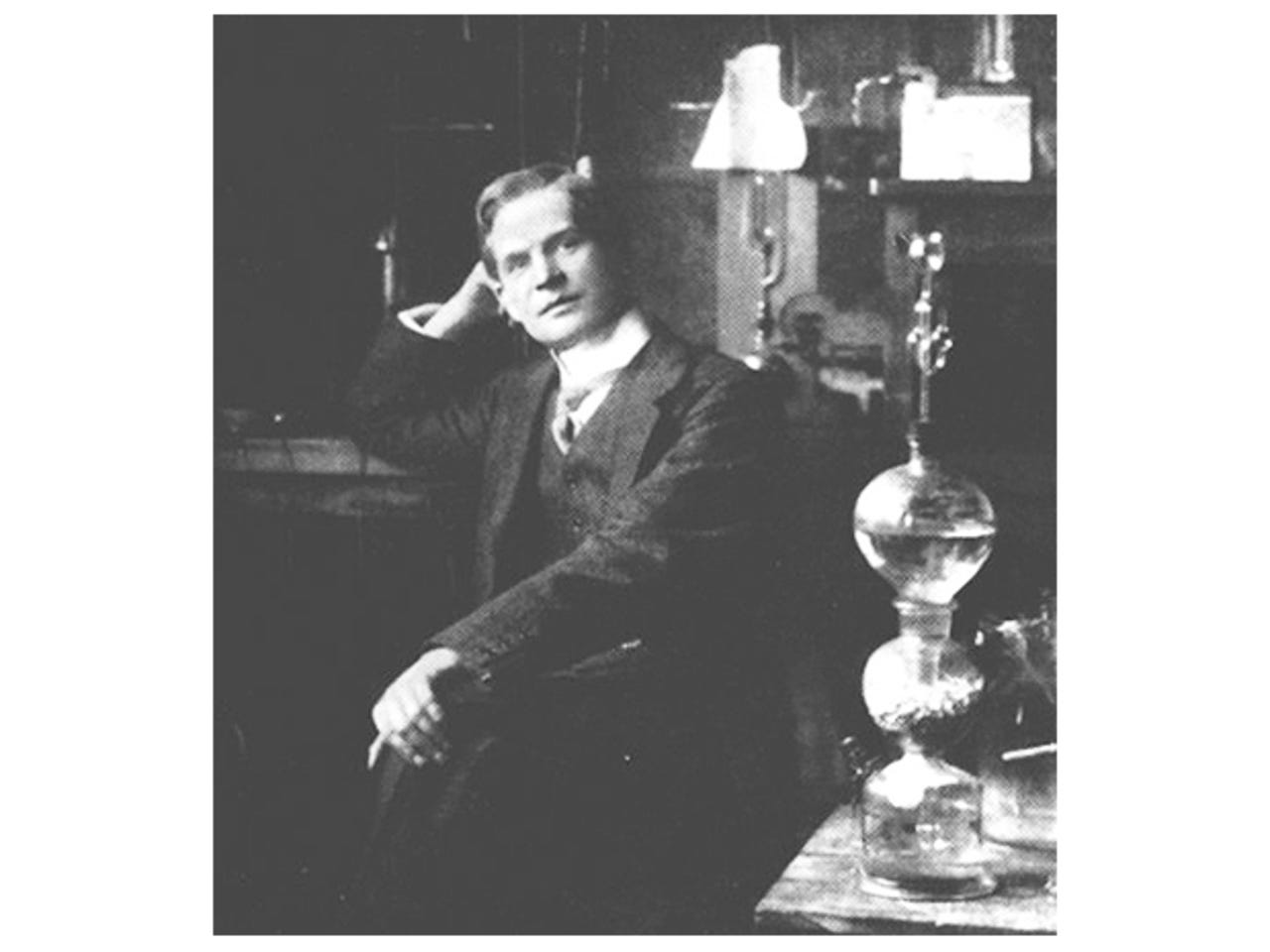The Curious Case of Soddy's Box

Health and safety is important, of course — it's tricky enough to remain fit and healthy without the added risk of driving without a seat belt, or inhaling your colleagues' cigarette smoke at work all day. However, it can be said to have "gone mad", or at least a little screwy, when a significant piece of the country's scientific heritage comes under threat of destruction. I refer to the curious case of Glasgow University and Soddy's Box.
Frederick Soddy (1877-1956) was an English chemist, and later economic theorist, whose career-defining work (some of it in collaboration with Ernest Rutherford) was to establish that radium decay produces positively charged helium nuclei (alpha particles) and — while a lecturer at Glasgow (1904-1914) — that radium is a decay product of uranium.

Soddy also coined the term 'isotope' (after a suggestion from Scottish writer and doctor Margaret Todd), and helped to formulate the Law of Radioactive Displacements, which describes the types of chemical element and isotope that are produced by different kinds of radioactive decay.
His work on uranium decay won Soddy the 1921 Nobel Prize for Chemistry. Other honours that came his way included his name being given to a crater on the Moon and a uranium-bearing mineral (Soddyite).
We were concerned, therefore, to learn recently that the health and safety authorities at Glasgow University, specifically the Radiation Protection Service, were planning to destroy a historic artefact known as Soddy's Box. This lead-lined container held a dozen or so test tubes of radium solution prepared by Soddy (and, it is rumoured, one by Marie Curie herself) as part of his prize-winning uranium/radium work. According to our source, the plan was to encase the radioactive relic in concrete and dispose of it at a suitable location.
This provoked "a flurry of emails" from concerned staff in various parts of the university, according to our source, after which an alternative course of action was settled upon. In a statement, a University of Glasgow spokesperson said: "We have been considering the future of the radioactive materials left to us by Frederick Soddy. As part of the process, our Radiation Protection Service officers investigated the possibility of safely disposing of the materials but, given their historic importance, the decision was ultimately made to keep the materials at the University, most likely as part of the Hunterian collection".
Given their continuing radioactivity, special arrangements would presumably be required to display the contents of Soddy's Box at the Hunterian Museum, but at least they appear to have been saved for the nation.
A storm in an academic teacup perhaps, but it at least allows us to pay tribute to an important, if today sadly little-known, pioneer of twentieth-century science. Other Soddy-ana we discovered in researching this story included his penchant for adventurous lecture demonstrations. To illustrate energy transfer in radioactive decay, Soddy would reportedly hold a bottle of fluorescent dye in one hand and a test tube of radium in the other; on bringing them close together the dye would glow in a suitably impressive manner — giving lecturer and audience what would now be regarded as an unacceptable dose of gamma radiation. This didn't appear to do our hero any harm though, as he lived to a ripe old 79 years of age.
Next year is also the centenary of Soddy's co-formulation (with Polish-American chemist Kazimierz Fajans) of the Law of Radioactive Displacements, so here's to Frederick Soddy and his Box.